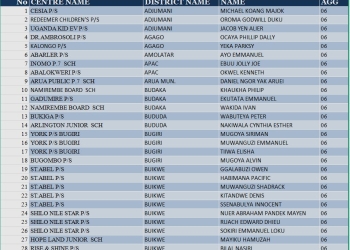
KAMPALA — Of all allegations of organ trafficking made in Uganda over the last one year, the latest by Mr. Kabanda Muhammad has sent the strongest shockwaves in the media by far. Involved in a boda-boda accident on 24th September 2022, admitted at Old Kampala Hospital with head injuries, wheeled into theater for a head operation, only to wake up with an abdominal incision, and to discover later that he had one kidney less.
The million-dollar question here is; in a land-locked country with no active renal transplant program, is it possible to harvest a kidney and transplant into a recipient across the boarder as part of a larger organ trafficking network?
Let’s start by understanding what transpires in a transplant theater. When a donor accepts to give their kidney to a recipient, both are wheeled into theater at the same time, but in different operating rooms. From the time the artery to the kidney is tied off, a timer is set and the clock starts ticking until it is transplanted into the recipient. The dizzying flurry of activity from placing the kidney on ice, preparing it, and placing it into the recipient, everything should desirably happen under one hour. But whey the rush?
The overarching goal of a successful kidney transplant process is that the transplanted organ (graft) should serve its recipient for the longest possible duration.
A glance at global statistics indicates that the average graft survival rate at 10 years & 20 years is 68.5% & 56.2% respectively. And the one of the key determinants of how durable the organ will be is duration between harvesting it and transplanting it into the recipient
A shallow dive into transplantation science will help you contextualize your conclusion. When a kidney is harvested by cutting it away from its blood supply, kidney cells start to die, and without preservation, the organ itself is un-usable after just a couple of minutes.
For this reason, it is preserved in ice between 2-4°C. However, even cold preservation can only slow down cell injury, but cannot completely prevent it.
Cold preservation triggers a cascade of harmful inflammatory and immune effects to the kidney cells, and these are amplified when blood supply to the organ is restored in the recipient.
The longer the cold preservation period (Cold Ischemia Time- CIT), the greater the injury, and therefore the lower the chances that the organ will function optimally and durably.
Contemporary transplantation science has not yet drawn the line at how many hours of Cold Ischemia Time (CIT) you need to declare that the graft will not function. But what is globally known is that the risk of graft failure is small when CIT is shorter than 36 hours One quarter (25%) of kidneys with a CIT of up to 36 hours will fail by 10 years. As expected, beyond a CIT of 36 hours, the failure rate at 10 years is as high as 36%.
Even with the modern advances in preservation of organs in transit, such as special life preserving solutions and LifePort Kidney transportation systems, the above graft survival statistics have not dramatically improved.
Now with the above background, let us proceed and answer the following practical questions with more science and less fiction;
1. How long would it take for a kidney to leave an operating theater in Kampala and be transplanted into a recipient in the United Arab Emirates for example? (Factor in at least 24 hours for scheduling a commercial flight, at least 12 hours for matching the organ with its recipient, and at least 24 hours of scheduling the transplant operation).
2. What would be the cost of such a stolen kidney? (Factor in the cut for the harvesting Doctor in Kampala, flight costs, and the overhead fees for the organ trafficking cartel, with all costs amplified by the risk involved).
3. Who would be the willing buyer of such an expensive organ that has a long CIT, a high risk of failure, short durability, and possibly infected with a virus or two?
In conclusion, the answer to whether this model of organ theft in Uganda is possible at this stage largely lies in your honest answer to the above 3 questions, now that you armed with the science.
The writer is Dr. J.C Luyimbaazi is the Executive Director at Lubaga Hospital

















